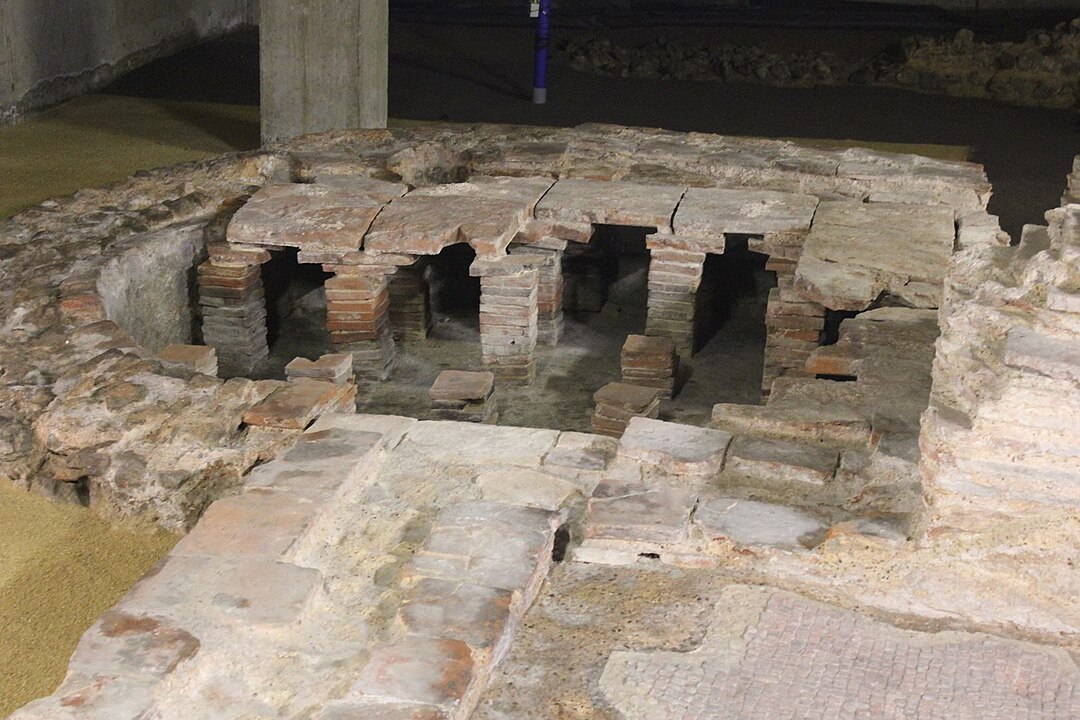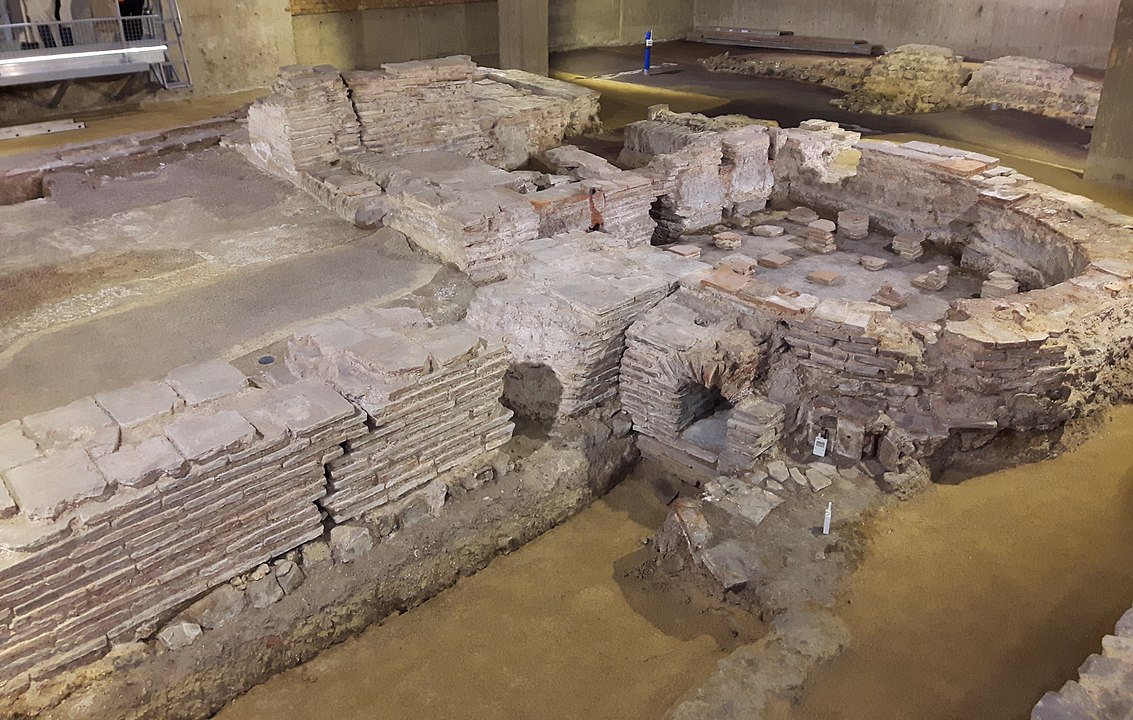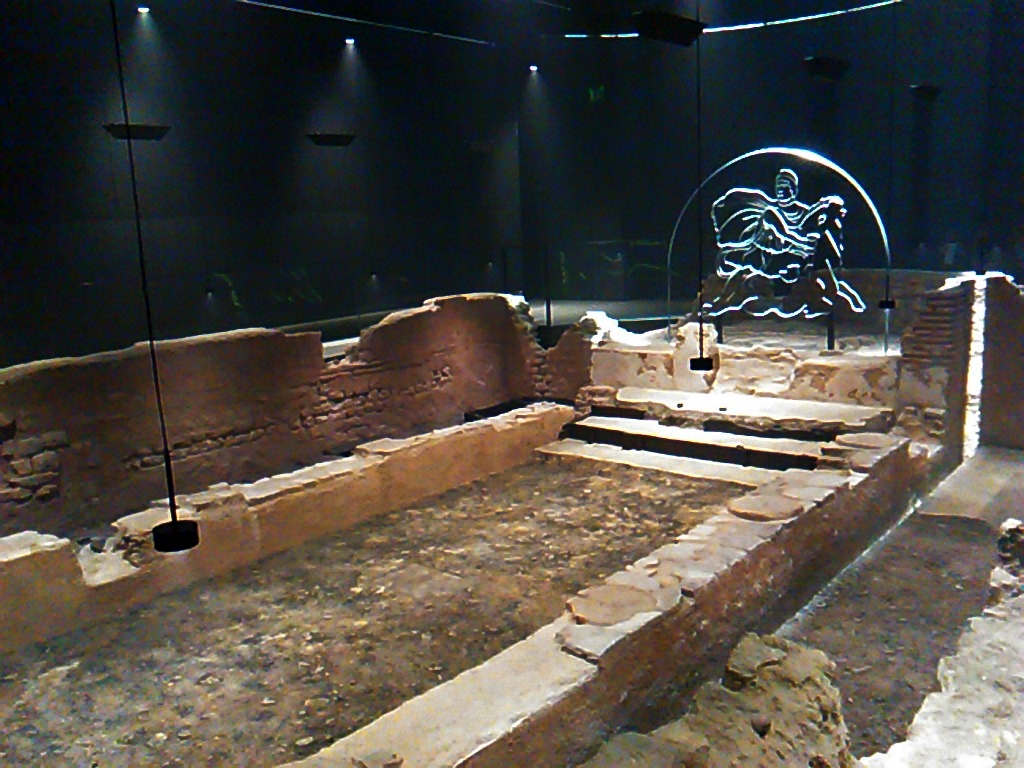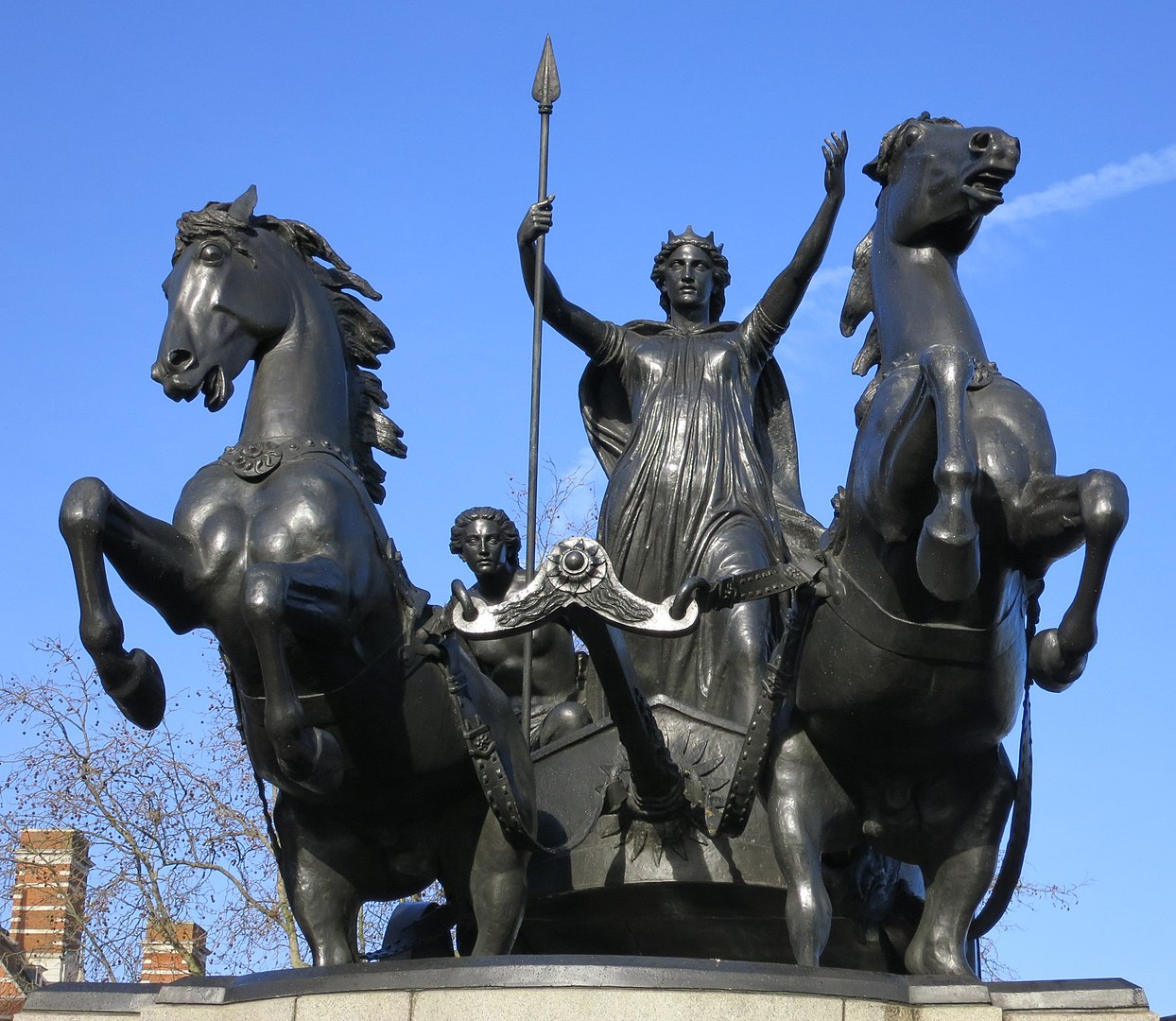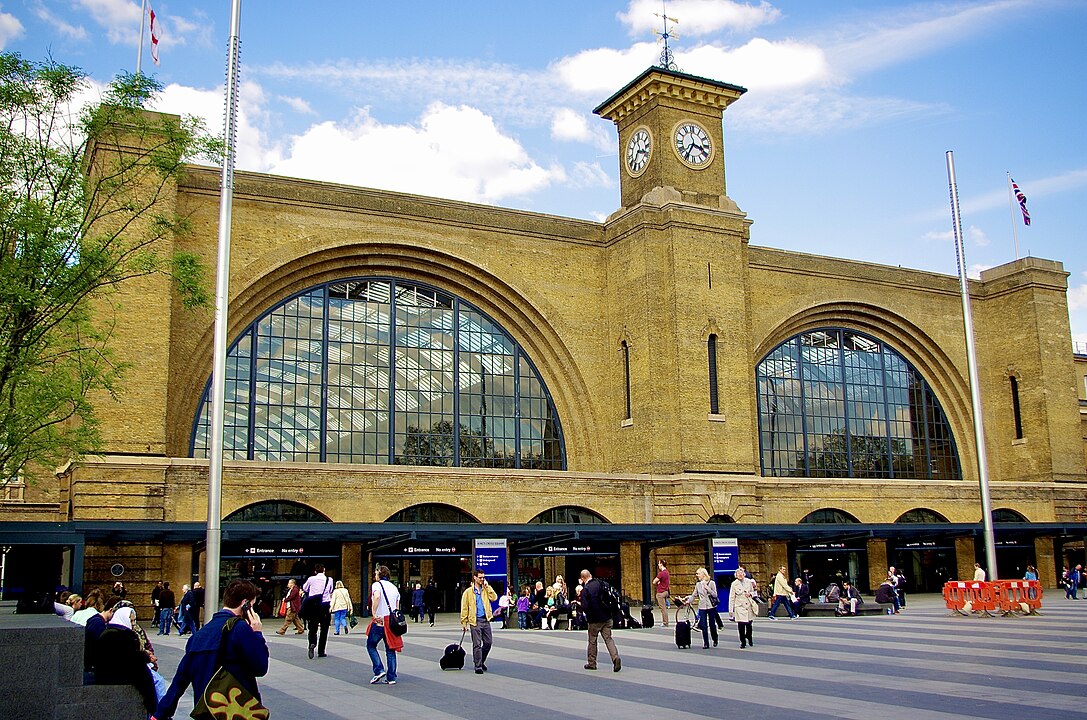The Lost Gem Of Ancient Londinium – The Roman Basilica
Have you ever visited the small, cosy Italian restaurant “Giorgo” on Lime Street? It is a great place to catch a breather and grab a bite, and a favourite stop whenever I roam central London. But what if I told you that on that very place almost two thousand years ago stood the most imposing edifice to be built in Britain for the next millennium? This must surely be an exaggeration, you would respond. And you would be wrong.
Londinium, the bustling Roman settlement that once stood where modern London thrives, was no ordinary provincial outpost. By the 2nd century AD, it was a glittering hub of commerce, culture, and Roman might. Among its most monumental structures were the basilica and forum, a complex that rivalled anything else in the Roman Empire. The basilica was more than just a building; it was a statement, a physical testament to Rome’s power. Larger than the present-day St Paul’s Cathedral, this lost gem was a striking example of Roman architecture, culture, and the unforgiving sweep of history.
The Basilica and Forum of Londinium: A Titan of Roman Britain
By the early 2nd century AD, Londinium had grown from a humble trading post into the most significant city in Roman Britain. The Roman authorities had grand plans for it, and at the heart of these ambitions stood the basilica and forum, some of the most impressive public buildings ever raised in this distant province.
The basilica, a towering structure of over 500 feet long and more than 80 feet wide, was a marvel of Roman engineering. For perspective, it dwarfs the contemporary St Paul’s Cathedral, the very emblem of modern London’s skyline. It wasn’t just the impressive size but the ambition behind it. The basilica wasn’t built for any singular purpose. In typical Roman fashion, it was a multi-functional space designed to impress, administrate, and govern.
In Roman cities, the basilica was the beating heart of civic life. Part town hall, part courthouse, and part business hub, the Londinium Basilica followed this tradition. Merchants gathered here to finalise trade deals, judges presided over trials, and officials discussed the city’s administration. Roman Britain might have been remote from the empire’s bustling heart, but with the basilica in Londinium, it had a slice of Rome itself.
But the basilica was only one half of this monumental complex. Adjoining it was the forum, a vast open space equally significant in the city’s life. The forum and basilica formed the civic and administrative centre, where politics, religion, and commerce collided. The citizens of Londinium would have flocked to this complex, their lives interwoven with the functions these buildings served.
The Forum: Londinium’s Beating Heart
The forum was the city’s nerve centre at the zenith of Londinium’s prosperity. It functioned as a public square, market, and ceremonial space all at once, its role echoing the forums in Rome itself. Lined with colonnades and surrounded by public buildings, the forum was where every aspect of Roman life came together. Traders set up their stalls, hawking goods from across the empire, soldiers on leave shared stories from distant frontiers, and politicians made speeches to the gathered crowds.
The design of the forum was pure Roman ambition. Measuring roughly 400 by 200 feet, it was one of the largest north of the Alpes. Its rectangular layout mirrored the grandeur of similar spaces in cities like Pompeii and Ephesus, providing a glimpse into what Londinium aspired to be. The forum wasn’t just functional; it was symbolic. To have such a grand space in the heart of Londinium declared the city’s importance to the empire.
At its centre stood the basilica, a massive backdrop to the bustling life of the forum. Imagine Londinium at its height in the 2nd century: the great basilica looming over a sea of merchants, officials, and citizens, its high roofline visible from far outside the city. Roman architecture was designed to awe, and the Londinium forum-basilica complex succeeded brilliantly. The sight of the sun glinting off the tiled roof, the marble columns rising against the skyline—it was Londinium’s answer to the imperial splendour of Rome.
Inside, the basilica was a hive of activity. Civil courts heard cases, merchants brokered their latest deals, and magistrates handled the city’s administration. The basilica’s interior would have been no less impressive than its exterior, with high ceilings, sweeping arches, and columns echoing Roman public spaces’ classical grandeur. It must have been a bustling place, filled with the sounds of people going about their daily business against the backdrop of this monumental setting.
The Inauspicious End: Carausius and Londinium’s Betrayal
By the end of the 3rd century AD, Londinium’s fortunes took a sharp turn. The Roman Empire was in a state of turmoil, facing external threats and internal rebellions. One such figure who rose to prominence was Marcus Aurelius Carausius, a military commander of humble origins who saw an opportunity in the empire’s fractured state.
Around AD 286, Carausius declared himself emperor of Britain and northern Gaul, essentially cutting off these territories from the Roman Empire. Londinium, being the largest city in Roman Britain, found itself in the heart of this rebellion. Under Carausius, the city thrived briefly, as his rule brought stability, even if it was at odds with the empire. He styled himself as the legitimate ruler, minting coins with his image and holding court in Londinium.
But this era of independence was short-lived. In AD 293, Carausius was assassinated by his finance minister, Allectus, who then seized power. Eager to reclaim its lost province, Rome sent forces to suppress the rebellion. In AD 296, the Roman general Constantius Chlorus (the father of Constantine the Great) launched a successful invasion, retaking Britain and ending the separatist regime.
As punishment for Londinium’s support of Carausius, the basilica was destroyed. The once proud symbol of Roman order and civilisation was reduced to rubble. What had stood as a beacon of the empire’s presence in Britain now lay in ruins, a victim of imperial wrath. It was a brutal reminder of Rome’s control, the basilica’s destruction serving as a warning to other cities that might consider rebellion.
Excavating the Ruins: A Lost Legacy
For centuries, the ruins of Londinium’s basilica lay buried beneath layers of London’s ever-growing urban sprawl. By the time London began to expand significantly in the medieval and modern periods, the once mighty basilica had been all but forgotten. Occasionally, remnants were discovered—stones and fragments of walls—but it wasn’t until the late 19th century that serious excavations began to uncover the true scale of what had once stood in the heart of Roman Londinium.
In 1881, during construction work in the City of London, builders unearthed significant remains of what was believed to be the basilica. Archaeologists quickly identified parts of the foundations, sections of the walls, and even some decorative features that hinted at the building’s former grandeur. But much of the basilica was lost. Centuries of rebuilding, expansion, and the changing course of the River Thames had eroded the basilica’s physical presence. Most of what had once been a massive structure had either been repurposed or destroyed.
The forum and basilica complex, which had once dominated Londinium, was now merely a ghost, a handful of ruins buried beneath the streets of modern London. Today, almost no visible trace remains. Some sections of the walls have been incorporated into modern buildings (one such fragment can be seen in the basement of a barber’s shop at the corner of Gracechurch Street and Leadenhall Market), and occasionally, small fragments of the basilica are found during excavations. But for the most part, the grandeur of the Roman basilica has been erased by time.
Yet its legacy endures. Every stone, every fragment that remains speaks to Londinium’s role in the Roman Empire. It was a provincial capital that dared to rival the cities of mainland Europe. The basilica and forum were symbols of that ambition, towering monuments to Roman order and civilisation. Today, as we walk the streets of modern London, it’s worth remembering that beneath our feet lies the lost gem of ancient Londinium, the basilica that once stood as a testament to the city’s Roman past.
Conclusion: A Glimpse into Roman Britain’s Ambition
The Roman Basilica of Londinium wasn’t just a building but a testament to Roman ambition in Britain. Larger than St Paul’s Cathedral, it symbolised the importance of Londinium within the empire. The forum, with its markets and public spaces, was the heartbeat of the city, a place where commerce, politics, and daily life flourished. But like many symbols of power, the basilica met a tragic end, destroyed as punishment for Londinium’s support of a renegade emperor. Today, almost nothing remains, but the legacy of this lost gem still lingers, offering a tantalising glimpse into the grandeur of ancient Londinium.

